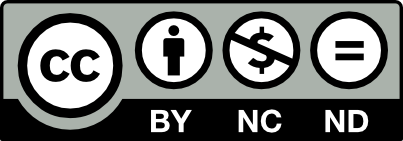Empreu aquest identificador per citar o enllaçar aquest ítem:
http://hdl.handle.net/10609/147249
| Títol: | Barriers and facilitators for safe sex behaviours in students from Universidad de Santiago de Chile (USACH) through the COM-B Model |
| Autoria: | Armayones, Manuel Leiva, Eduardo Figueroa, Oriana Villarroel, Francisco Duarte Anselmi, Giuliano |
| Altres: | Universidad de Santiago de Chile Universidad Bernardo O'Higgins Universidad del Desarrollo Universitat Oberta de Catalunya (UOC) |
| Resum: | Introduction. Unsafe sex is one of the main morbility and mortality risk factors associated with sexually transmitted infections (STIs) in young people. Behavioural change interventions for promoting safe sex have lacked specificity and theoretical elements about behaviour in their designs, which may have affected the outcomes for HIV/AIDS and STI prevention, as well as for safe sex promotion. This study offers an analysis of the barriers and facilitators that, according to the university students who participated in the focus groups, impede or promote the success of interventions promoting a healthy sexuality from the perspective of the action's stakeholders should undertake. In turn, this study proposes intervention hypotheses based on the Behaviour Change Wheel which appears as a useful strategy for the design of intervention campaigns. METHODS: We organized two focus groups with students from Universidad de Santiago de Chile (USACH). The focus groups gathered information about: perceptions of students about sex education and health risk behaviors in youth sexuality rating of HIV/AIDS and STI prevention campaigns. In the focus groups, participants were offered the possibility of presenting solutions for the main problems and limitations detected. After identifying the emerging categories related to each dimension, a COM-B analysis was performed, identifying both the barriers and facilitators of safe sex behaviors that may help orient future interventions. RESULTS: Two focus groups were organized, which comprised 20. Participants were aged 18 to 25 years. Most of the sample consisted of women (n=14), followed by men (n=5), and 1 participant who reported having a non-conformant gender (n=1). Regarding sexual preferences, participants reported being heterosexual (12), lesbian (4), homosexual (3) and bisexual (1). Based on the Behaviour Change Wheel and specifically on its "intervention function", the barriers (n=38) and facilitators (n=34) were integrated into a series of actions to be taken by those responsible for promotion campaigns at Universidad de Santiago de Chile. We classified the behaviours according to FI. The most prevalent intervention functions were: Education, Persuasion, Training Conclusion: The content analysis of the focus groups was based on the intervention functions of the Behaviour Change Wheel. Specifically, the identification by students of barriers and facilitators for the design of strategies for promoting a healthy sexuality is a useful tool, which when complemented with other analyses, may contribute to improve the design and implementation of healthy sexuality campaigns among university students. Making them more participate and co-created by young students. We highlight the experience as a field of specific knowledge, proposing to value its social and hermeneutic dimension, valuing it as a strategy of understanding and collaborative action. |
| Paraules clau: | disseny del comportament promoció de la salut salut sexual Behavior Change Wheel (BCW) |
| Tipus de document: | info:eu-repo/semantics/conferenceObject |
| Data de publicació: | 9-nov-2022 |
| Llicència de publicació: | http://creativecommons.org/licenses/by-nc-nd/3.0/es/  |
| Apareix a les col·leccions: | Conference lectures |
Arxius per aquest ítem:
| Arxiu | Descripció | Mida | Format | |
|---|---|---|---|---|
| ARMAYONES_POSTERSession5_9NOV_Final.pdf | 1,3 MB | Adobe PDF |  Veure/Obrir |
Comparteix:
 Google Scholar
Google Scholar
 Microsoft Academic
Microsoft Academic
Aquest ítem està subjecte a una llicència de Creative CommonsLlicència Creative Commons


